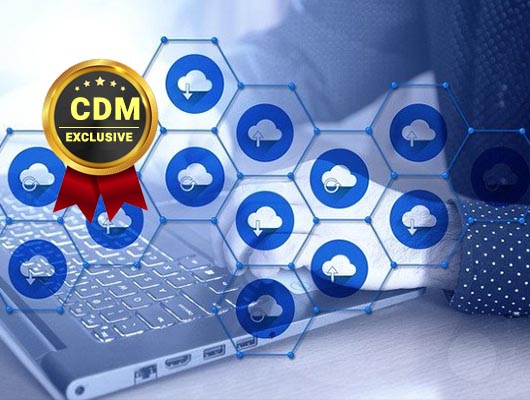By Roman Davydov, Technology Observer, Itransition
Legacy systems continue to play a vital role in the operations of many enterprises. However, over time, things like poor user adoption, increased maintenance costs, frequent errors and downtime significantly reduce the value of such digital solutions.
The situation may be even worse if we look at legacy software from the cybersecurity perspective. Legacy vulnerabilities pose one of the biggest enterprise cyber threats; experts state that any software that was deployed as early as two years ago may already be at risk.
Despite such statistics, enterprise managers often delay application modernization regardless of its apparent benefits. As a result, enterprises may put their data and business reputation at stake; after all, the use of outdated software is always associated with many technical, operational, and even legal risks.
In this article, we’ll discuss the reasons why legacy applications carry security risks, name some common vulnerabilities, and provide several recommendations on how enterprises can eliminate these threats.
Why outdated software poses cybersecurity risks
There are many different reasons why legacy software cannot be considered secure. One of them is that software vendors and manufacturers sometimes stop delivering updates over time. This fact, in turn, means that hackers may utilize known vulnerabilities to infiltrate corporate digital infrastructures; still, IT departments can partially mitigate this risk if they build and deploy their own fixes.
Another group of risks is related to the fact that legacy solutions rarely provide the functionality required to ensure cybersecurity; default features of modern software systems such as multi-factor authentication, data encryption, or role-based access may simply not be available. Even if a team has the desire and resources to develop and implement such functionality, outdated software may just not provide enough capabilities for doing it.
Enterprises may also experience security challenges due to a lack of IT staff who has the knowledge needed for maintaining legacy software. Many organizations have one or two engineers who are deeply immersed in the context of their systems and therefore can ensure a strong level of security; if these specialists quit their jobs, enterprises may simply not find someone to replace them. Even if an organization hires a professional who is familiar with the latest cybersecurity practices, enterprise managers may require months to onboard this person.
So, can enterprise managers do something to mitigate the aforementioned risks and improve legacy software security? Fortunately, yes, and here are some tips that can help them do it.
How enterprises can enhance the security of their legacy systems
Assessing cybersecurity
Obviously, you cannot eliminate specific threats when you don’t know if there are any and which exactly; therefore, the first thing an enterprise should do is thoroughly analyze its legacy infrastructure from the security perspective. In most cases, teams can choose such security assessment frameworks as ISO/IEC 27000 or NIST; if a software solution requires a more specialized approach, enterprise managers can also look up to such frameworks as GDPR, HIPAA, or CMMC.
The assessment process itself may vary depending on the specifics of your infrastructure, as well as your business and technical requirements. For example, you may start with defining an assessment scope and then start searching and identifying cyber risks; after that, you can implement specific security measures to eliminate the threats you’ve discovered.
In case your company lacks the right talent, competencies, or resources to conduct an assessment, you can consider hiring third-party consultants. Although this may require certain investments, this can also be the fastest and simplest way to gain a 360-degree view of your digital infrastructure.
Eliminating discovered threats
It may be difficult to provide one piece of advice here since any actions will largely depend on the assessment results. However, there are some things any team can do to mitigate the existing threats (of course in case it has the relevant talent and expertise).
First, a team can use the assessment results to develop patches for the discovered vulnerabilities. Although this is not a one-size-fits-it-all solution, this way enterprises can increase the security of their software if there is no other way possible. Also, here the team should tread particularly carefully — sometimes, patches and upgrades may generate new risks and vulnerabilities; therefore, if the team isn’t sure about the positive result, it may be better to entrust this task to third-party cybersecurity experts.
Second, based on the assessment, the team can develop new security policies or improve their existing ones. For example, an enterprise may implement user segmentation to limit access to the most vulnerable modules of its application. Alternatively, teams can start running regular penetration tests to be able to find and fix any threats quickly.
Considering software modernization
Although the above-listed measures may help with advancing security, legacy software may generate new risks and vulnerabilities anyway. Therefore, enterprise managers should still consider modernizing their software; this is the only fully reliable way to ensure that the corporate infrastructure is up-to-speed and follows best cybersecurity practices. For instance, teams can renovate their app architecture, migrate solutions to a more modern and secure platform, transfer data to the cloud, or implement selective customizations. If more radical measures are required, teams can also consider refactoring or developing a completely new solution instead of the old one.
Final thoughts
For many enterprises, legacy software remains an integral part of their digital infrastructures. While outdated solutions continue to provide some value, they also pose security risks; to mitigate them, teams can conduct cybersecurity assessments and fix vulnerabilities by deploying patches and enhancing their security policies. Still, only a comprehensive application modernization may guarantee advanced and future-proof cybersecurity.
About the Author
 Roman Davydov is a Technology Observer at Itransition. With over four years of experience in the IT industry, Roman follows and analyzes digital transformation trends to guide businesses in making informed software buying choices. Roman can be reached online at r.davydov@itransition.com and at our company website Itransition.
Roman Davydov is a Technology Observer at Itransition. With over four years of experience in the IT industry, Roman follows and analyzes digital transformation trends to guide businesses in making informed software buying choices. Roman can be reached online at r.davydov@itransition.com and at our company website Itransition.
Credit: Source link


Comments are closed.